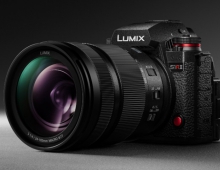
Panasonic Develops Four-layer Blu-Ray Recordable Disc
Following TDK's latest developments on multi-layer Blu-Ray (BD-R) discs, Panasonic announced that it has developed a four-layer BD-R media, featuring a 100GB capacity .
The Japanese company presented the new disc at the International Symposium on Optical Memory 2006 (ISOM'06) event, currently held in Takamatsu, Kagawa in Japan (October 15-19,2006). The conference includes presentations of the next-generation optical storage systems, alternatives such as holographic, three-dimensional, multi-level, near-field, hybrid and super-resolution technologies.
Panasonic (H. Habuta, M. Tomiyama, K. Takahashi, M. Tsukuda, N. Miyagawa, K. Nishiuchi, N. Yamada (Matsushita, Japan)) has developed a 4-layer Blu-ray Disc (BD) using inorganic phase-change Te-O-Pd recording films (layers), as the Nikkei Electronics publication reports.
The total capacity of the new disc reaches the 100 GB, with each layer to feature 25 GB of capacity.
In the presentation, Panasonic focused on the reliability and the durability of the new disc. The company said that the revised Te-O-Pd composition of the inorganic recording layers of the disc increase the playability of the disc even after 100 years.
According to Panasonic, the Te-O-Pd film exhibits superb transmittance values, making it ideal for use in multilayer recording. In terms of jitter, the 4-layer medium's performance is satisfactory for BD format requirements for recording at 1x and 2x. In addition, sufficient Carrier to Noise (CNRs) and adequate recording sensitivity was found to be available for a quadruple-layer disc, denoting the feasibility of high speed recording at a capacity of 100GB. In addition the material's high crystallization speed would allow a maximum recording speed of 2x.
Panasonic's internal tests indicate that the 4-layer BD-R prototype recorded at 2x gave a maximum jitter of 8.5% (1x play-back), which is adequate. In addition, artificial ageing acceleration tests showed that the disc is readable even after 100 years.
Panasonic has not yet scheduled the commercialization of the new disc and will most likely present it as a long-term storage (archive) medium.
TDK has also announced that it has achieved 2x writing speed with a 100 GB, four-layer disc (25 GB per layer) in 2005, and 1x writing speed with a 200 GB, six-layer disc (33.3 GB per layer) in 2006.
Panasonic (H. Habuta, M. Tomiyama, K. Takahashi, M. Tsukuda, N. Miyagawa, K. Nishiuchi, N. Yamada (Matsushita, Japan)) has developed a 4-layer Blu-ray Disc (BD) using inorganic phase-change Te-O-Pd recording films (layers), as the Nikkei Electronics publication reports.
The total capacity of the new disc reaches the 100 GB, with each layer to feature 25 GB of capacity.
In the presentation, Panasonic focused on the reliability and the durability of the new disc. The company said that the revised Te-O-Pd composition of the inorganic recording layers of the disc increase the playability of the disc even after 100 years.
According to Panasonic, the Te-O-Pd film exhibits superb transmittance values, making it ideal for use in multilayer recording. In terms of jitter, the 4-layer medium's performance is satisfactory for BD format requirements for recording at 1x and 2x. In addition, sufficient Carrier to Noise (CNRs) and adequate recording sensitivity was found to be available for a quadruple-layer disc, denoting the feasibility of high speed recording at a capacity of 100GB. In addition the material's high crystallization speed would allow a maximum recording speed of 2x.
Panasonic's internal tests indicate that the 4-layer BD-R prototype recorded at 2x gave a maximum jitter of 8.5% (1x play-back), which is adequate. In addition, artificial ageing acceleration tests showed that the disc is readable even after 100 years.
Panasonic has not yet scheduled the commercialization of the new disc and will most likely present it as a long-term storage (archive) medium.
TDK has also announced that it has achieved 2x writing speed with a 100 GB, four-layer disc (25 GB per layer) in 2005, and 1x writing speed with a 200 GB, six-layer disc (33.3 GB per layer) in 2006.





















